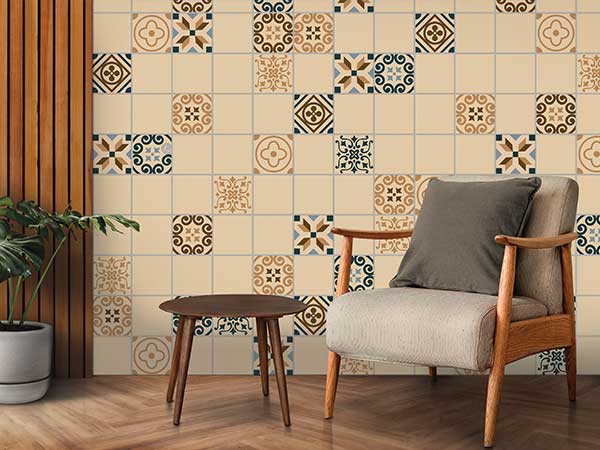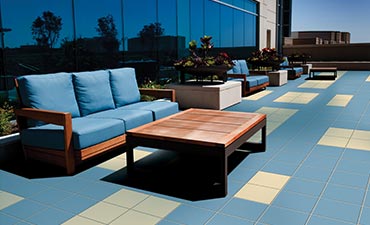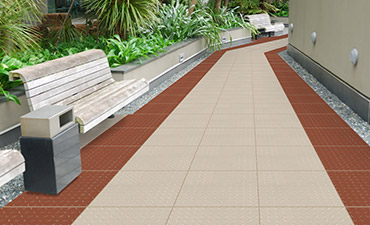Tiles by Size
Tiles are a popular and versatile flooring option, offering a world of design possibilities. The size of your chosen tile can dramatically impact the aesthetics and functionality of your space. Let’s explore the tile sizes with popular options, advantages and disadvantages, and guide you to choose the perfect tiles.
A Diverse Range: Exploring Popular Tile Size Options
Step into the vibrant world of tiles, where a diverse range of sizes caters to every design whim and space requirement. Here's a glimpse into some of tile dimensions you'll encounter:
Mosaic Tiles (Under 20cm x 20cm): These petite tiles, often crafted from ceramic or glass, excel at crafting intricate patterns and designs. Perfect for embellishing backsplashes, shower floors, and accent areas, they inject charm and visual allure.
Small Tiles (Up to 30cm x 30cm): Versatile and timeless, these tiles offer a classic aesthetic suitable for various applications like floors, walls, and countertops. Particularly favoured in compact rooms where larger tiles might overwhelm the space.
Standard Tiles (30cm x 30cm to 60cm x 60cm): Among the most popular sizes, these tiles strike a balance between functionality and style. They're adaptable for most spaces and provide a timeless appeal. The 60cm x 60cm option, often hailed as the "workhorse" of tiles, reigns supreme for its versatility.
Large Tiles (Over 60cm x 60cm): Embraced for their expansive feel and seamless appearance, large format tiles have surged in popularity. Sizes ranging from 60cm x 120cm to an impressive 120cm x 240cm create a modern and minimalist ambiance, perfect for contemporary spaces.
Check out - Parking Floor Tiles
Big or Small Tiles? Weighing the Advantages and Disadvantages of Tile Size
Choosing the right tile size for your project requires understanding the pros and cons of each option. Here's a breakdown to help you navigate the decision-making process:
Small Tiles:
Advantages of Small Tiles: Create intricate patterns, suitable for small spaces, and offer good slip resistance (due to more grout lines).
Disadvantages of Small Tiles: Can make a space feel busy, require more grout (which can be difficult to maintain), and installation might be more time-consuming.
Standard Tiles:
Advantages of Standard Tiles: Versatile and practical, suitable for most applications, timeless aesthetic, readily available in a wide variety of styles and materials.
Disadvantages of Standard Tiles: Might not be ideal for creating a modern minimalist look in very large spaces.
Large Tiles:
Advantages of Large Tiles: Create a sense of spaciousness, fewer grout lines for easier maintenance, modern and sleek aesthetic.
Disadvantages of Large Tiles: Can be more expensive, require a very flat subfloor for installation, and may be susceptible to showing imperfections due to their larger size.
Choosing the Perfect Fit: Size Considerations for Your Flooring Project
Now that you understand the various tile sizes and their pros and cons, here are some factors to consider when making your choice:
The Size of the Space: For smaller spaces, smaller tiles might be preferable to avoid an overwhelming look. Large format tiles can make a larger space feel even more expansive.
Design Aesthetic: Consider the overall design style you're aiming to achieve. Small mosaics can create a traditional or Mediterranean feel, while large format tiles create a modern minimalist look.
Functionality: Think about the functionality of the space. For high-traffic areas, smaller tiles with more grout lines might offer better slip resistance.
Budget: Larger tiles are generally more expensive than smaller ones. Consider your budget when making your selection.
You may also like our product - Elevation tiles.
A Range of Sizes for Every Vision
Johnson Endura is proud to offer the Endura range of tiles in a variety of sizes, from classic small format to trendy large format options. Endura tiles are crafted from high-quality materials and are available in a wide range of styles and finishes to suit any design vision.
FAQs on Tile Sizes and Installation:
Related Blogs
As the monsoon season approaches, it's crucial to ensure the safety of outdoor areas..
Tiles are known to be an excellent flooring solution as they are durable, aesthetically pleasing, easy to clean, and more stable than pavers.
If you are considering to install tiles in your walkway, patio, terrace, deck, and other outdoor areas, it is essential to choose the right material





























